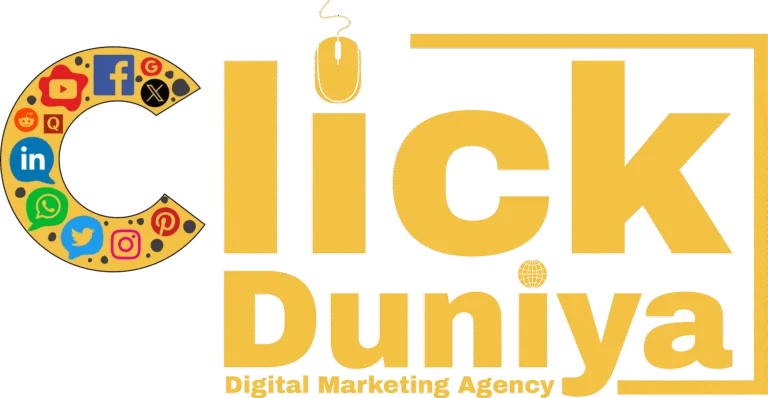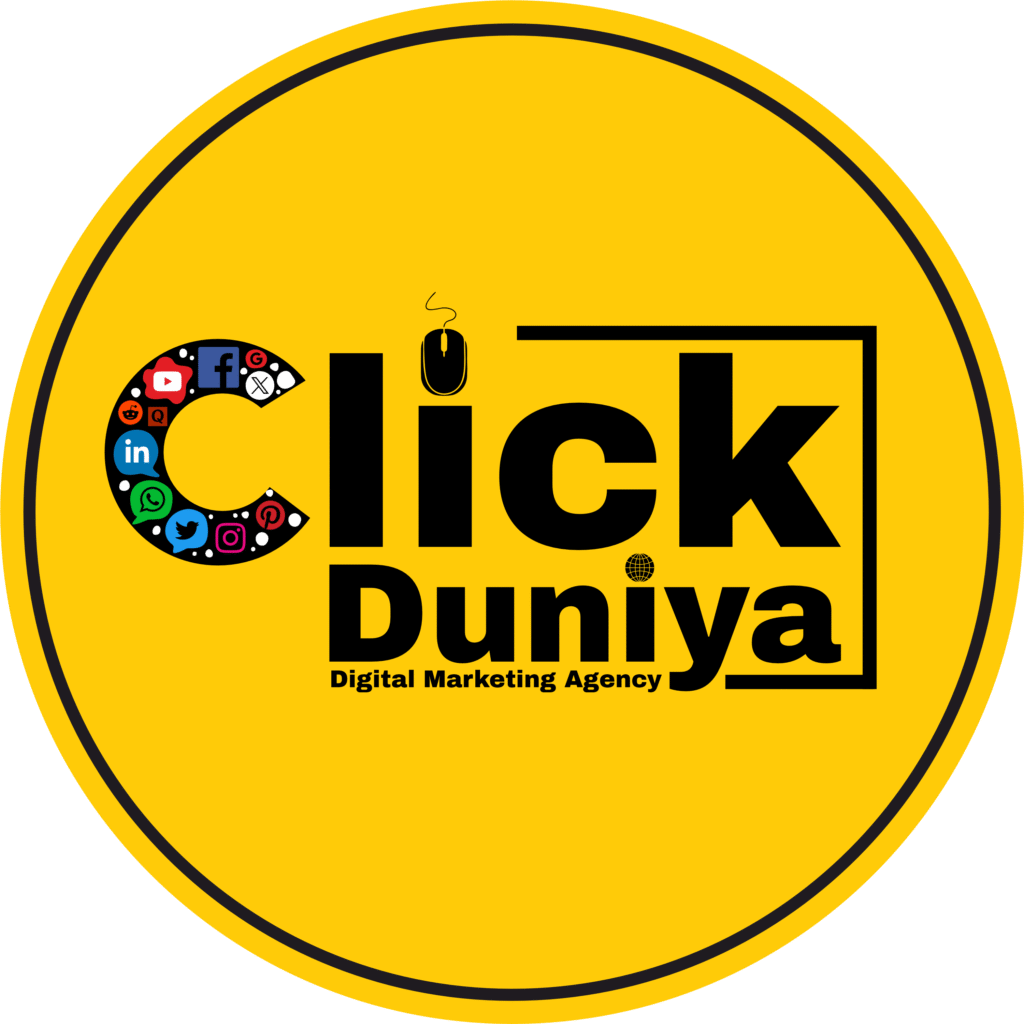Launching a startup is exciting, but scaling it is a whole different game. In today’s world, having a good product or service isn’t enough—visibility is everything. And that’s where digital marketing strategies for startups make all the difference.
The challenge? Startups usually work with limited budgets, small teams, and a need for quick results. The good news is that the right strategies can help you grow faster, without burning all your cash. Whether you’re a tech startup in Bangalore, a D2C brand in Delhi, or a food delivery service in Indore, these proven strategies can work for you.
Here are 15 digital marketing strategies that actually work for startups in 2025.
1. Define Your Target Audience Clearly
One of the biggest mistakes startups make is trying to market to everyone. This leads to wasted time, money, and energy. Instead, focus on a clearly defined audience.
Step-by-step:
List your top 2–3 customer types.
Identify their demographics (age, gender, location, income).
Understand their pain points and goals.
Build simple “buyer personas” to guide your campaigns.
| Persona Name | Demographics | Goals | Challenges |
|---|---|---|---|
| Student Sam | 18–24, College | Save money, learn skills | Low budget |
| Startup Shreya | 25–35, Entrepreneur | Grow business | Lack of visibility |
2. Invest in a Strong Website & SEO Foundation
Think of your website as your digital office. If it’s slow, unorganized, or invisible to Google, your growth will stall.
Action steps for startups:
Use WordPress or Shopify for easy setup.
Install Rank Math for SEO basics.
Make sure every page loads fast (under 3 seconds).
Add clear CTAs like “Book a demo” or “Contact us.”
🔧 Free Tools:
Google Search Console → Fix indexing issues.
PageSpeed Insights → Check loading speed.
A strong website foundation saves you money later, as you won’t need to rebuild when scaling.
3. Content Marketing That Solves Problems
Startups that educate win trust faster. Instead of just selling, create blogs, guides, and case studies that solve your audience’s pain points.
Action steps for startups:
Write “how-to” blogs (e.g., “How to choose the right co-working space”).
Share customer success stories.
Publish comparison posts (“Our tool vs. [competitor]”).
Repurpose content into short posts, reels, or infographics.
🔧 Free Tools:
AnswerThePublic → Find real questions people ask.
Ubersuggest → Keyword ideas.
💡 Example: Many Indian SaaS startups grew by sharing free educational blogs long before running ads.
4. Leverage Social Media Strategically
Social media is crowded, but it’s still a goldmine for startups—if you use it right. Don’t try to be everywhere; instead, pick 2–3 platforms where your audience is active.
Step-by-step approach:
B2B startups → Focus on LinkedIn + Twitter (X).
D2C startups → Focus on Instagram + YouTube Shorts.
Local startups → Focus on Facebook + WhatsApp Business.
Post consistently (3–4 times a week) and use a mix of:
Educational content (tips, guides)
Storytelling (founder journey, customer wins)
Engaging posts (polls, Q&A, reels)
💡 Example: Several Indian D2C brands like Wow Skin Science scaled massively by focusing on Instagram reels.
5. Email Marketing for Retention
Acquiring a new customer can cost 5x more than retaining an existing one. That’s why startups should build an email list from day one.
Action steps:
Add a newsletter signup form on your website.
Offer something valuable (eBook, discount, checklist).
Send regular updates, offers, and educational tips.
Automate welcome emails for new subscribers.
🔧 Free Tools:
Mailchimp (free plan up to 500 subscribers).
Sender.net (simple automation for startups).
💡 Tip: Even Indian startups in traditional industries (like coaching or retail) see big results with consistent emails.
6. Local SEO for Indian Startups
If your startup serves a specific city or region, Local SEO is your secret weapon. People searching “near me” are ready to buy, and Google Maps often shows local businesses first.
Action steps:
Claim and optimize your Google Business Profile.
Add accurate NAP (Name, Address, Phone number).
Upload high-quality photos and videos.
Collect customer reviews regularly.
Get listed on free Indian directories like Justdial, IndiaMart, Sulekha.
📊 Local SEO Checklist:
| Task | Frequency | Tool/Platform |
|---|---|---|
| Update Google Business Profile | Monthly | Google Maps |
| Ask for reviews | After each sale | WhatsApp, Email |
| Add photos/videos | Weekly | Google Business |
| Build citations | Once | Justdial, IndiaMart |
💡 Example: A small café startup in Indore doubled footfall in 6 months by simply optimizing Google Business and posting daily food photos.
7. Paid Ads with Small Budgets (Google & Meta)
Startups think ads are too expensive, but if done smartly, even ₹500/day ads can bring leads. The key is targeting the right audience and testing continuously.
Action steps:
Start with Google Ads Smart Campaigns or Meta Ads (Facebook/Instagram).
Test multiple ad creatives.
Use retargeting to show ads only to people who visited your site.
Track conversions with Google Analytics 4.
🔧 Free Tool: Google Keyword Planner → Find search demand before spending on ads.
💡 Example: A SaaS startup in Pune tested ads with just ₹10,000/month and found its top converting audience within 45 days.
8. Influencer & Micro-Influencer Collaborations
Micro-influencers (with 5,000–50,000 followers) often give startups a better ROI than celebrities. They are trusted by niche communities and cost far less.
Step-by-step:
Find 5–10 micro-influencers in your industry (Instagram, LinkedIn, YouTube).
DM them with a personalized pitch.
Offer free product/service or small payments.
Track performance with discount codes or affiliate links.
💡 Example: Indian skincare startups like mCaffeine grew by working with hundreds of micro-influencers instead of spending big on Bollywood celebs.
9. Video Marketing & Short-Form Content
Video is the fastest-growing content format in India. YouTube Shorts, Instagram Reels, and LinkedIn videos drive massive organic reach in 2025.
Action steps for startups:
Record short, simple videos (30–60 sec) explaining your product.
Share customer testimonials on video.
Post educational content (tips, how-tos, hacks).
Repurpose one video across multiple platforms.
🔧 Free Tools:
Canva → For editing and templates.
CapCut → Easy mobile video editing.
💡 Tip: A fintech startup in Bangalore created 20 short educational videos on “saving money” and saw a 300% increase in app downloads in 3 months.
10. Referral & Affiliate Marketing Programs
Word-of-mouth is still the most powerful marketing strategy. A well-structured referral or affiliate program can multiply your customer base.
Action steps:
Offer existing customers rewards for referrals (discounts, cashback, freebies).
Create an affiliate program where bloggers/influencers earn commission.
Promote it on your website and social media.
Track referrals with free tools like Tapfiliate (basic plan) or Google Sheets.
💡 Example: Paytm, Zerodha, and many Indian startups grew massively by rewarding referrals—because people trust recommendations more than ads.
11. Leverage Free PR & Media Opportunities
Startups often underestimate the power of earned media. A single mention in a newspaper, magazine, or startup blog can drive huge credibility and traffic.
Action steps:
Write short press releases when you launch new features.
Pitch your story to startup-focused media like YourStory, Inc42, or Business Standard.
Use platforms like HARO (Help a Reporter Out) or Indian alternatives like PRNewsWire India.
Network with local journalists on LinkedIn and Twitter (X).
💡 Example: Many Indian edtech startups gained visibility after being featured in YourStory—completely free of charge.
12. Community Building (WhatsApp, Telegram, LinkedIn Groups)
Instead of just chasing followers, startups should focus on building communities. A loyal community not only buys from you but also becomes your brand’s advocate.
Action steps:
Create a WhatsApp or Telegram group for your customers.
Share exclusive tips, discounts, or updates.
Encourage members to ask questions and share experiences.
Build a LinkedIn group if your startup is B2B.
💡 Example: Many Indian coaching startups build exclusive WhatsApp groups where students engage daily—boosting retention and referrals.
13. Optimize for Mobile & Speed
In India, 70%+ of users access websites on mobile. If your site loads slowly or looks broken on phones, you’ll lose customers instantly.
Action steps:
Use a responsive website theme.
Compress images with tools like TinyPNG or Imagify.
Test your site’s speed on mobile using PageSpeed Insights.
Fix Core Web Vitals for better Google rankings.
📊 Key Mobile Optimization Factors:
| Factor | Why It Matters | Free Tool to Test |
|---|---|---|
| Page Speed | Users bounce if >3 sec | PageSpeed Insights |
| Responsive Design | Good user experience | Google Mobile Test |
| Image Compression | Faster load time | TinyPNG |
| Core Web Vitals | Ranking factor | Google Search Console |
14. Analytics-Driven Decisions
Startups that don’t track numbers often make blind decisions. Data helps you see what’s working and where to cut costs.
Action steps:
Install Google Analytics 4 and connect it to your site.
Use Google Tag Manager for event tracking (like button clicks, form fills).
Track basic KPIs: traffic, conversion rate, CAC (Customer Acquisition Cost).
Review performance weekly and adjust.
📊 Sample KPI Table for Startups:
| Metric | Why It’s Important | Target |
|---|---|---|
| Website Traffic | See growth trend | +10% MoM |
| Conversion Rate | Leads from visitors | 2–5% |
| CAC | Spend to acquire customer | As low as possible |
| Retention Rate | Returning customers | 30%+ |
15. Work With a Digital Marketing Company When Needed
At some stage, DIY marketing becomes overwhelming. That’s when partnering with a digital marketing company makes sense.
Why this helps startups:
Agencies bring experience, saving you from costly trial-and-error.
They provide access to premium tools you may not afford.
They handle execution, so you can focus on growth.
💡 Example: Many startups in Indore outsource SEO and ads to a digital marketing company in Indore, saving time and scaling faster.
Final Thoughts
Growing a startup in 2025 isn’t about spending the most—it’s about using the smartest strategies. From defining your audience to leveraging micro-influencers, SEO, and email marketing, these 15 digital marketing strategies for startups can help you achieve growth without burning your budget.
Start small, stay consistent, and double down on what works. And when it feels overwhelming, don’t hesitate to get help from a trusted digital marketing agency—it can be the growth partner your startup needs.
FAQs on Digital Marketing Strategies for Startups
Q1. What is the best digital marketing strategy for startups in India?
The best strategy is a mix of SEO, local listings, and social media marketing. For faster results, startups also use micro-influencers and paid ads.
Q2. How much should a startup spend on digital marketing?
Startups can begin with as little as ₹10,000–₹30,000/month. Focus on SEO, social media, and email first before scaling ads.
Q3. Do startups need a digital marketing agency?
Not always. Many startups start DIY, but as campaigns grow, working with a digital marketing company in Indore or elsewhere saves time and boosts ROI.
Q4. What free tools can startups use for marketing?
Google Analytics, Google Search Console, Mailchimp, Canva, and Ubersuggest are great free tools to get started.
Q5. How long does it take to see results from digital marketing?
SEO usually takes 3–6 months, while ads and social media can show results in weeks if done right.
If you want more tips and tricks like the above visit – https://clickduniya.in/



Pingback: How a Local Salon Got 200+ Leads in 30 Days with Meta Ads
Pingback: Restaurant SEO Case Study: Tripled Footfall by local SEO